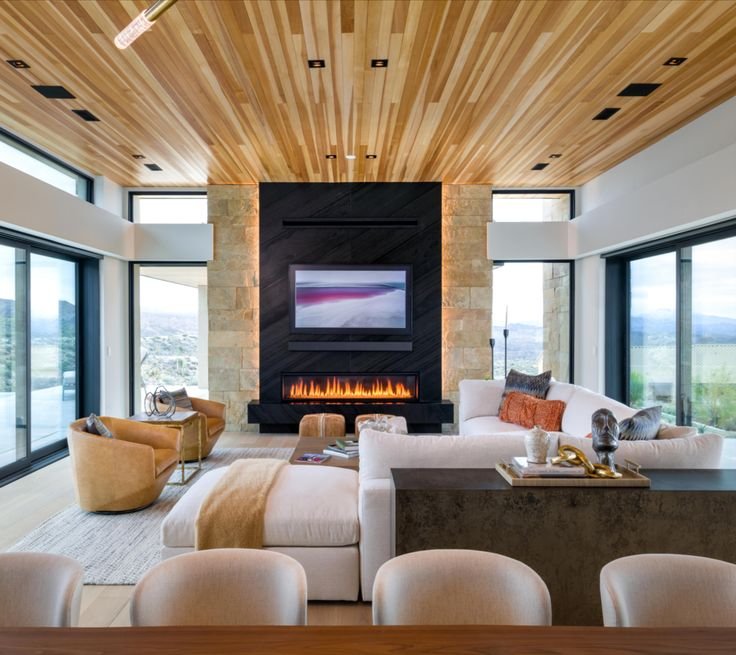Redefining Luxury: The Intersection of Sustainability and Design
Redefining Luxury: The Intersection of Sustainability and Design
In the realm of design, a new paradigm is emerging—one that seamlessly blends luxury with environmental stewardship. No longer confined to the fringes of eco-conscious circles, sustainability has become synonymous with sophistication. In this journey toward a more mindful aesthetic, discerning consumers are seeking spaces that not only captivate the senses but also honor our planet. Welcome to the age of sustainable luxury, where opulence and responsibility converge in harmonious unity.
While sustainable ideals are nothing new to the world of design, they have generally been championed by large commercial or residential projects targeting Green certifications like LEED or BREEAM. Architectural firms such as Gensler and William McDonough + Partners have for years led the charge in creating spaces that elevate the human experience while honoring the natural world, with recent projects like the Salesforce Tower in San Francisco, designed to achieve LEED Platinum certification, and Park 20|20 in the Netherlands, a pioneering cradle-to-cradle development. While these certifications align with the essence of the sustainable luxury we speak of, namely, a commitment to ethically sourced materials, responsible manufacturing, and holistic design practices; we are excited to see a movement that hits closer to home. More and more we are encountering clients that call for their spaces to be curated with responsible intention and purpose. Each element, from the flooring beneath their feet to the lighting that bathes their rooms in ambiance, are chosen with the utmost care to minimally impact the environment, without sacrificing style.
The Net Zero ICONIC Home is the nation's first sustainable showhouse. Image courtesy of Iconic Life Magazine
Central to the ethos of sustainable luxury are design principles rooted in longevity and eco-consciousness. Ethical sourcing ensures that materials are procured in a manner that respects both people and the planet. Eco-friendly materials, from reclaimed wood to recycled aluminum, imbue spaces with character and soul while minimizing carbon footprints. Energy efficiency and waste reduction take center stage, transforming once-overlooked details into pillars of sustainability.
The rise of sustainable luxury has catalyzed a paradigm shift in interior design practices. Architects and designers, once confined by traditional notions of luxury, are embracing a new ethos—one that celebrates innovation and responsibility in equal measure. Collaborations between creatives and manufacturers yield groundbreaking solutions, from modular furniture crafted from reclaimed materials to smart home systems that optimize energy usage without compromising comfort.
One should note that pioneers abound, pushing the boundaries of design excellence and environmental responsibility. Interface is one industry leader with a commitment to sustainability, offering biophilic flooring solutions like the Net Effect Collection, which repurposes discarded fishing nets from coastal communities. Eco Timber showcases its dedication to responsible forestry practices through its projects.
Emeco and Uhuru Design redefine furniture as functional art, crafting iconic pieces like the 111 Navy Chair, made from 111 recycled PET bottles, and the Stoolen, a series of stools crafted from reclaimed timber sourced from demolished buildings.
The 36" Stoolen by Uhuru Design is great as a coffee table or for multi-person seating. Image courtesy of UhuruDesign.com
Emeco’s 111 Navy chairs showcased in the dining room of a Marta Nowicka & Co project in East Sussex, England Image courtesy of Domstay.com
Another hallmark of sustainable luxury is adaptive reuse—the practice of repurposing existing structures for new functions. Companies like Etsy and Google are transforming old warehouses and factories into vibrant office spaces that celebrate the history and character of the buildings while reducing the environmental impact of new construction. Projects like the High Line in New York City and the Tate Modern in London demonstrate the potential of adaptive reuse to create dynamic and sustainable urban environments.
Emerging technologies promise to further advance sustainability, blurring the lines between innovation and tradition. Biophilic design principles, which seek to reconnect us with nature, will continue to shape the way we inhabit and interact with our surroundings.
Luxury should therefore no longer be defined by excess but by intention—a celebration of beauty, responsibility, and the boundless creativity of the human spirit. In the pursuit of luxury, let us not lose sight of our responsibility to the planet and future generations. Sustainable luxury offers a beacon of hope—we would love to see a world where sustainability is the ultimate expression of sophistication.




